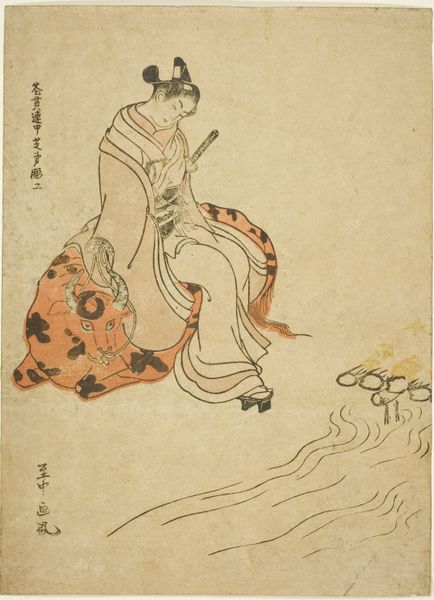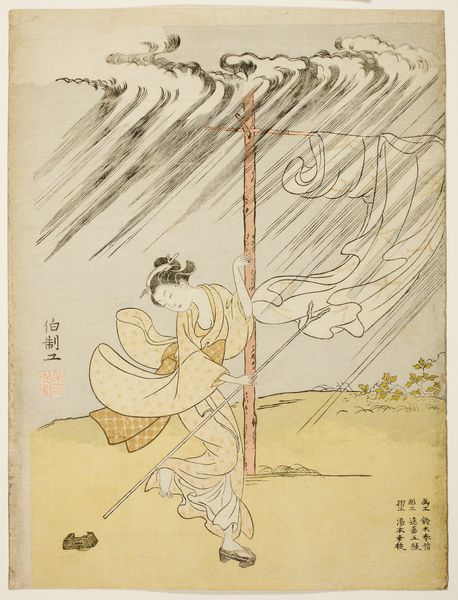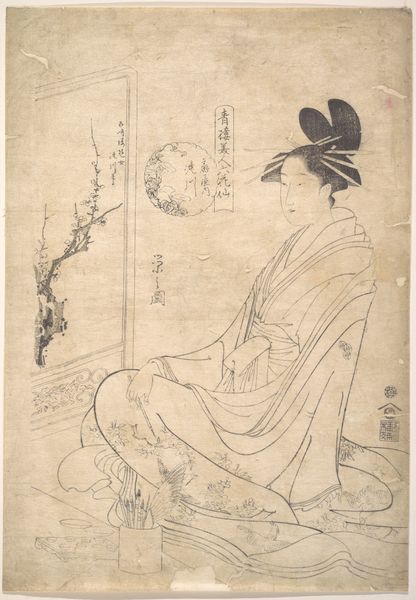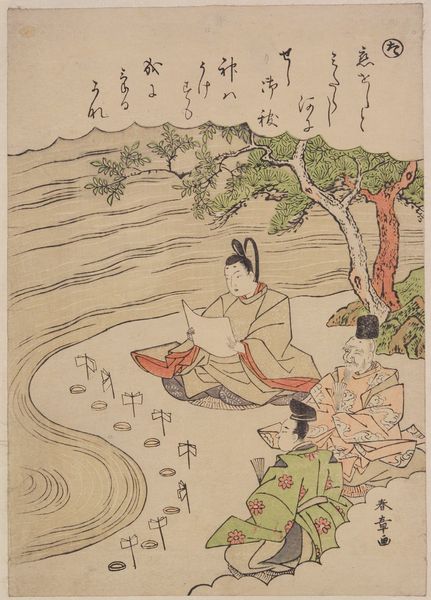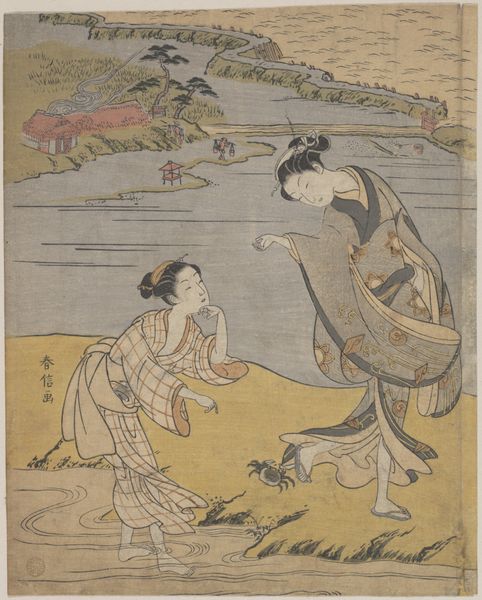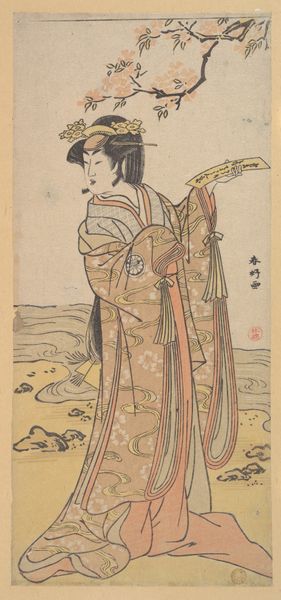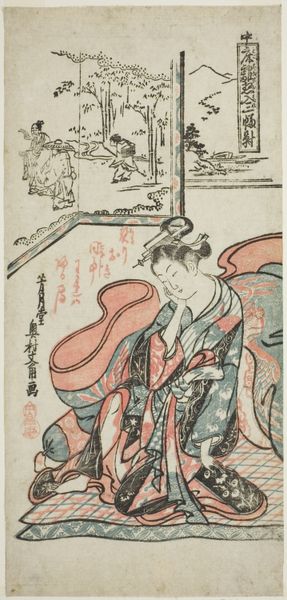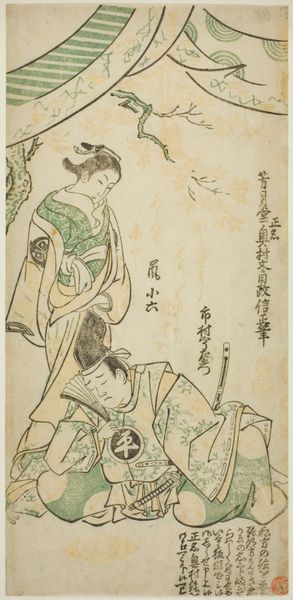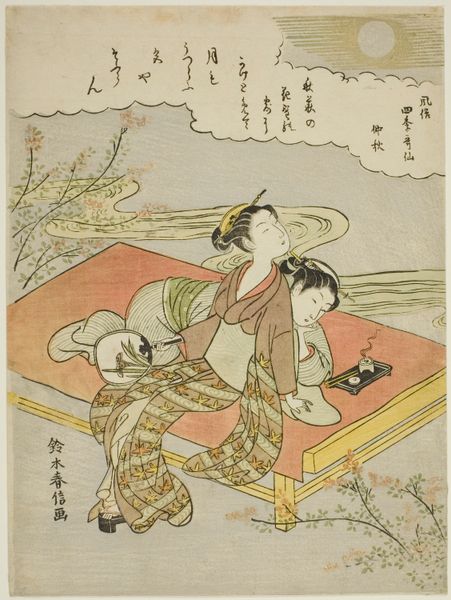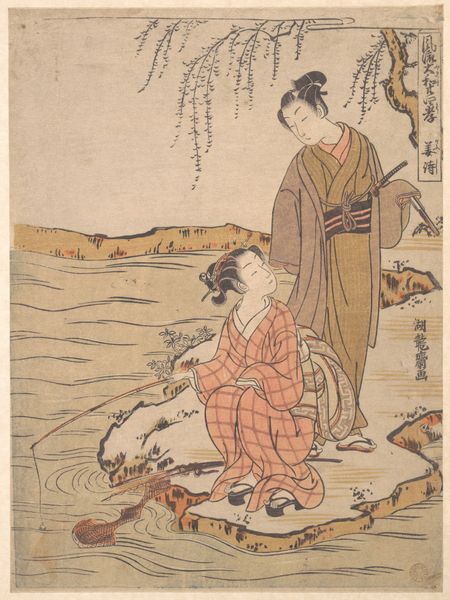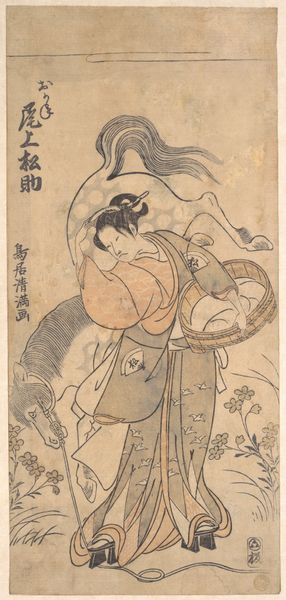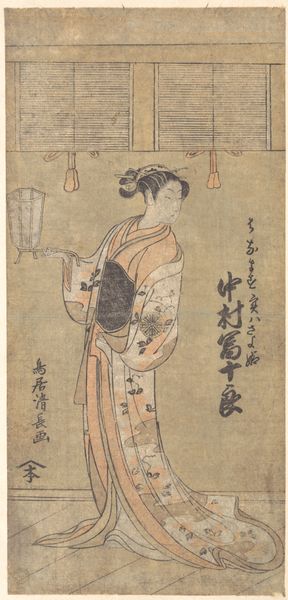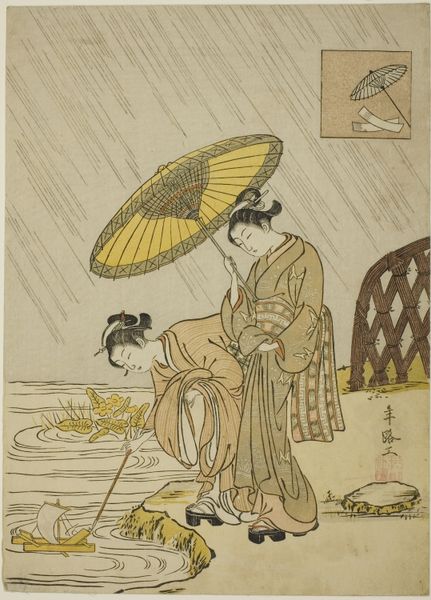
The Jewel River at Chōfu (Chōfu no Tamagawa) 1758 - 1778
0:00
0:00
print, woodblock-print
# print
#
asian-art
#
landscape
#
ukiyo-e
#
figuration
#
woodblock-print
Dimensions: 10 5/8 x 7 3/4 in. (27 x 19.7 cm) medium-size print (chu-ban)
Copyright: Public Domain
Suzuki Harunobu created "The Jewel River at Chōfu" around 1766, using woodblock printmaking, a technique known as Ukiyo-e. The image is made by carving a series of woodblocks, one for each color, and then printing them in succession onto paper. Looking closely, notice how the material informs the image. The soft, absorbent paper takes the ink, creating delicate lines and subtle color gradations. The carver's skill is evident in the crispness of the lines and the intricate details of the woman's kimono. Areas of the print were left unprinted and then embossed to create areas of texture, such as the river. This print is part of a larger history, tied to urban consumer culture and popular entertainment in Japan’s Edo period. Woodblock printing allowed for mass production and dissemination of images. This made art more accessible to a broader audience, beyond the wealthy elite, reflecting a shift in art production towards commercial markets. Considering the materials, processes, and social context of this artwork helps us appreciate the full meaning and challenges traditional distinctions between fine art and craft.
Comments
No comments
Be the first to comment and join the conversation on the ultimate creative platform.
